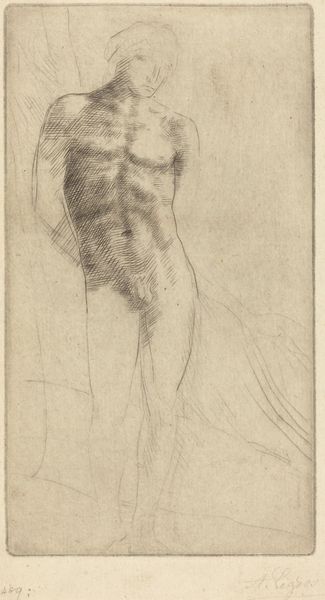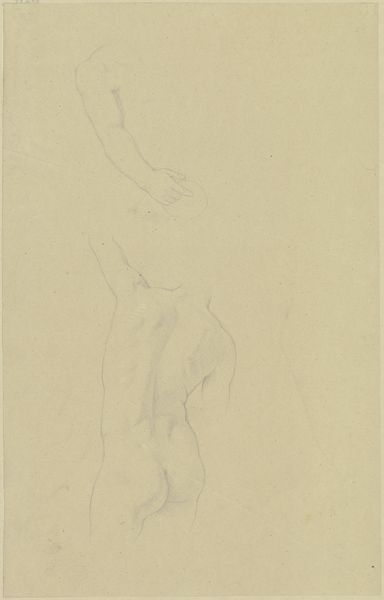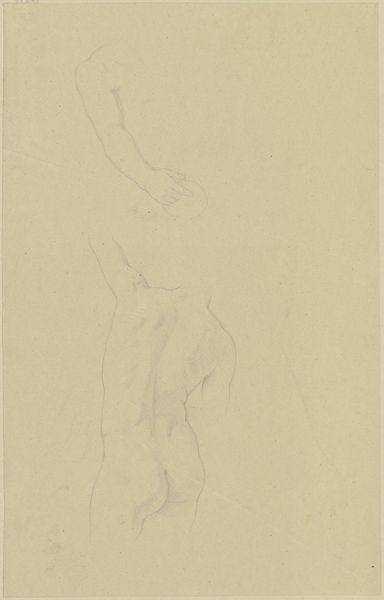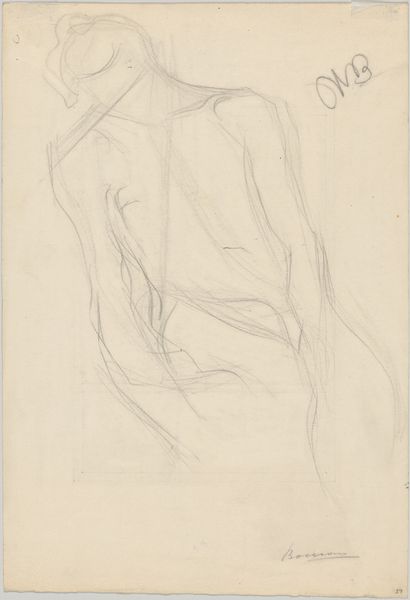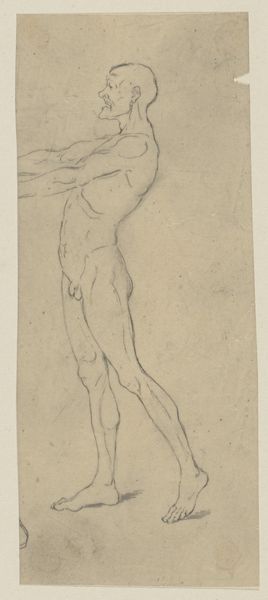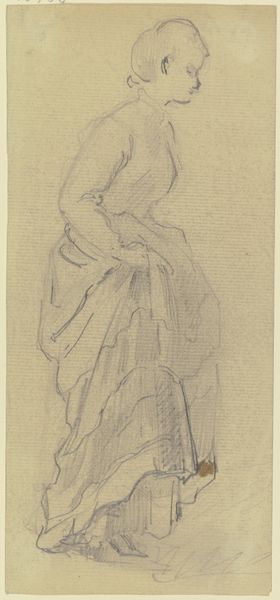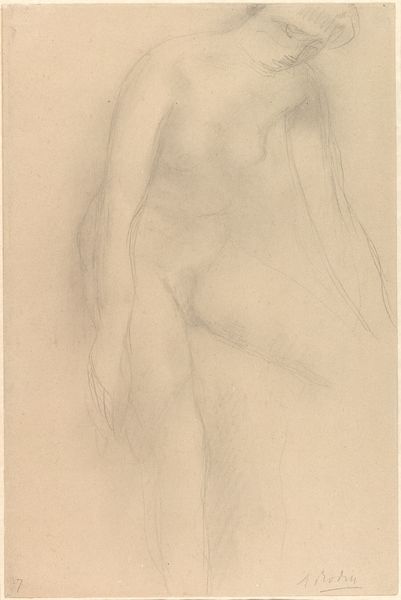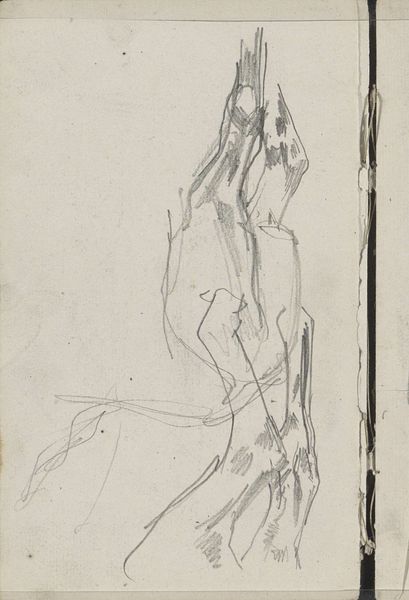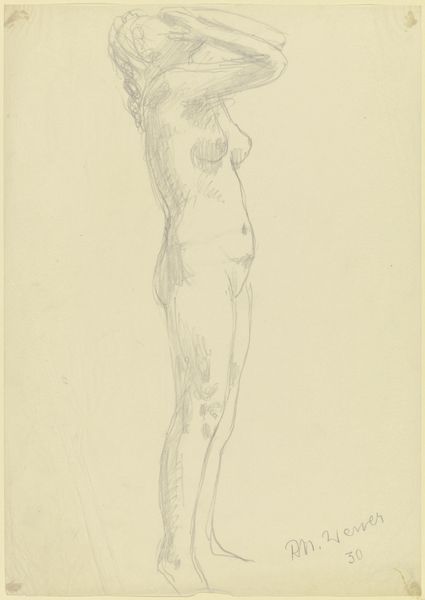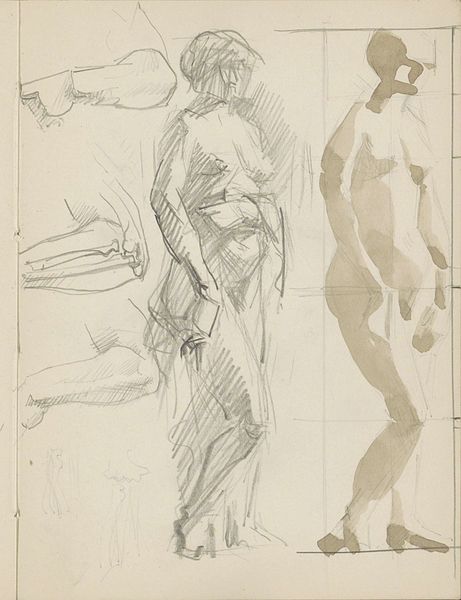
drawing, dry-media, charcoal
#
drawing
#
16_19th-century
#
figuration
#
dry-media
#
charcoal
#
academic-art
#
nude
#
realism
Copyright: Public Domain
Curator: Wilhelm Gentz's "Male back half nude" created in 1886 is before us, housed right here at the Städel Museum. The artist uses charcoal and dry media for this academic study. What is your initial reaction? Editor: Vulnerable. The exposed back and partial nudity make it quite raw. There’s a strange, compelling incompleteness that seems to invite speculation. Curator: Incomplete indeed; it appears to be a study. We see an embrace of Realism, a key concept within the 19th-century art academies. Here Gentz engages with the long tradition of nude studies. Editor: Realism? I can agree to some degree. It’s true, but beyond surface appearance, I read it as speaking to broader notions of gender and power. That exposed nape of the neck is an age-old signifier of subservience. Curator: An intriguing reading, yet it must be stated, within the academy, such a study functioned primarily as training, pushing artists toward anatomical mastery. Do you really find it subversive? Editor: Not inherently, but its reception is dynamic. Gentz lived in a specific period of upheaval, so how are viewers engaging with masculinity? Even the medium -- a quick drawing -- adds an element of the fleeting or performative to that identity. How might gender performance relate to this very unfinished aesthetic? Curator: That’s an incredibly contemporary lens through which to consider the work! It's easy to forget that such life studies were common preparation. Gentz later went on to become a celebrated Orientalist painter. Editor: Which further complicates things! Thinking about the power dynamics between the East and West in art history brings new meanings. Considering Orientalism also shifts and perhaps enriches our contemporary analysis. Curator: It reminds us of the complex web of connections and histories each piece carries. It also suggests the role that these works can play in ongoing dialogues, about power, about the role of the body, about ways that artists and academic institutions construct images of people. Editor: A productive collision between academic rigor and present-day dialogue! Thank you for illuminating this historical nude through a critical lens; It inspires further considerations.
Comments
No comments
Be the first to comment and join the conversation on the ultimate creative platform.
